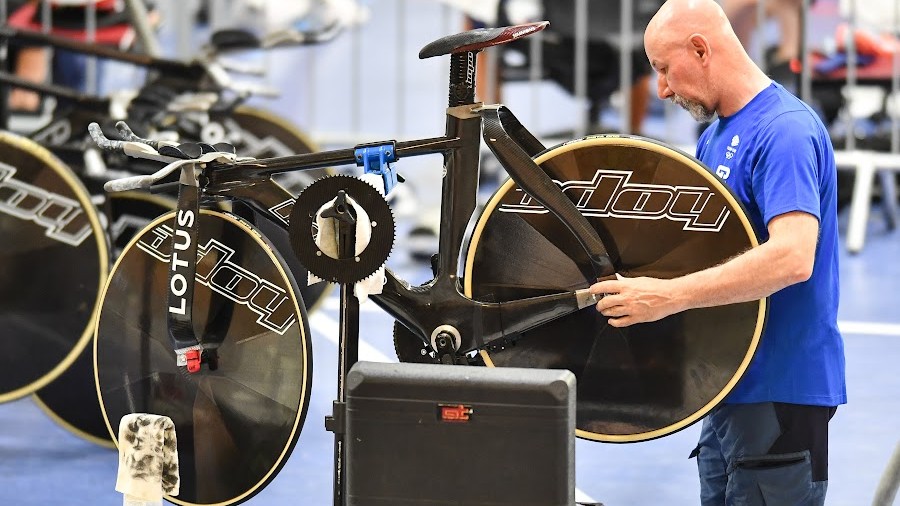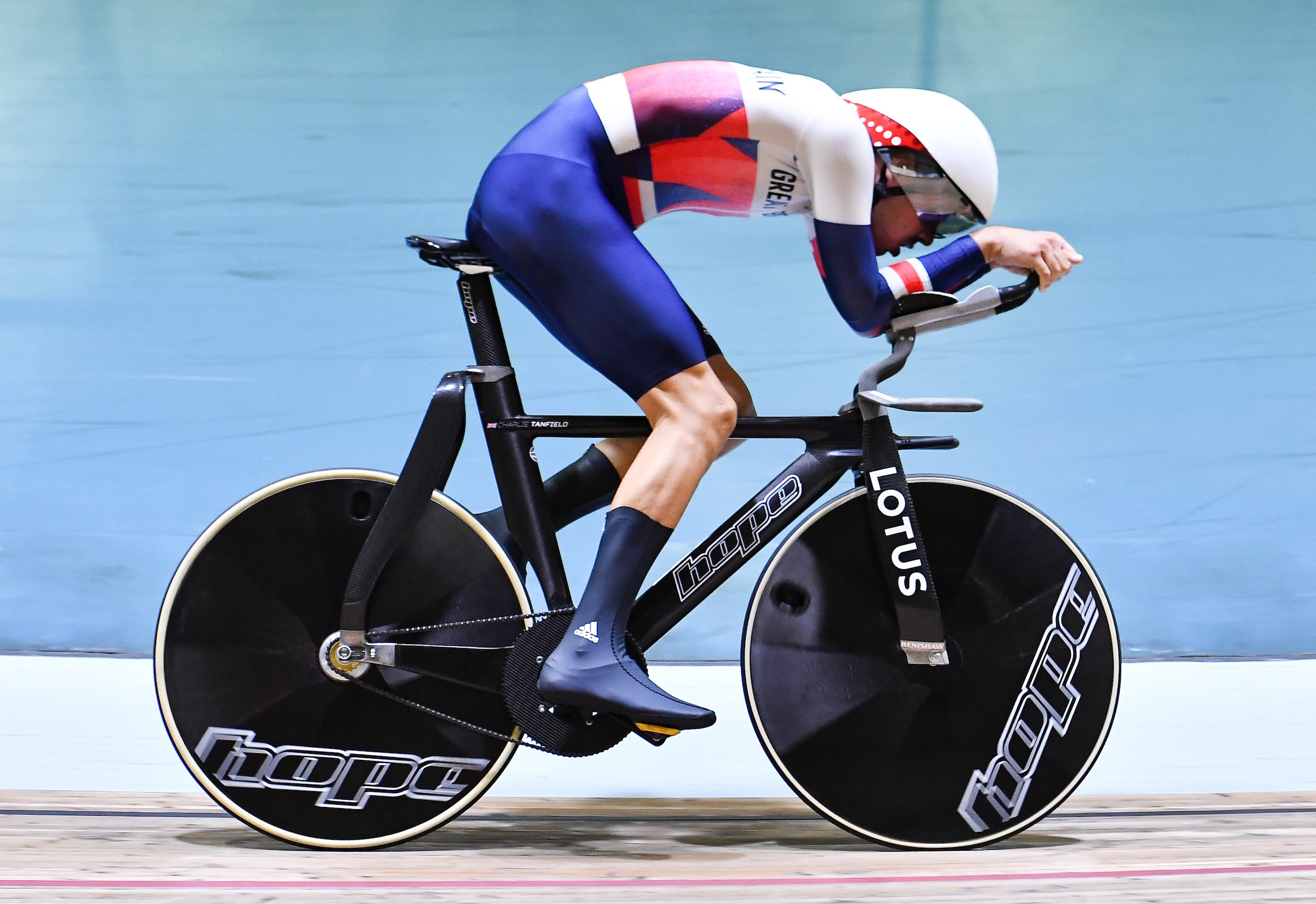Team GB's secret smaller-pitch chains break cover ahead of Olympic track cycling events
Scaled-down drivetrain designed to reduce aerodynamic drag and increase stiffness - and hasn't yet been spotted by Team GB's rivals

British Cycling is to use chains, chainrings and sprockets with a smaller distance between teeth - or pitch - in order to reduce the size of the front chainring and gain aero, weight and rigidity advantages, Cycling Weekly has learnt.
A second source puts the choice down to efficiency gains, due to extra teeth spreading the load and allowing for better chain articulation, as opposed any real aerodynamic gains.
Team GB has secretly been using chains with a 10mm pitch - the standard is half-inch or 12.7mm - and correspondingly smaller chainrings and sprockets with their Hope x Lotus HB.T bikes prior to the Olympics, and we’re expecting to see them used in the Izu Velodrome next week.
Read more: Team GB's Hope x Lotus HB.T Olympic track bike in detail
Asked if our rumour mill was accurate, British Cycling's Head of Technical Development Tony Purnell told us "more or less; it's not going to be a secret from Monday."
There are no UCI - and therefore IOC - technical regulations regarding chain pitch and so British Cycling has not had to have the 10mm-pitch equipment greenlighted. However, all equipment used in Tokyo does need to have been commercially available before January 2021.
Since the smaller sized chain and chainring are harder to spot, it appears that the tech has flown under the radar pre-Olympics - though other components such as New Motion Labs’ drivetrain and the AeroCoach Aten chainring have been disallowed due to missing the January deadline.
The latest race content, interviews, features, reviews and expert buying guides, direct to your inbox!
Our source told us of some discontent among other nations, whose planned equipment had been disallowed.
Addressing the question, Purnell told Cycling Weekly: "Because we've gone for a pretty radical bike, a lot of eyes are on what we do. We slavishly have to comply with the regulations, like everybody does. With anything new, we liaise with the UCI. Rest assured, we are well aware of the regulations, absolutely everything that we're using, we make sure we comply. We keep records."
Purnell wouldn't confirm with us where the set-up had been available but did add: "Make no mistake, it was commercially available and of all the regulations, you can imagine we take a special interest in that one, because when you do something different, you become a target."
We did find a chain that looked remarkably similar, at Renold Velo, for £450; Renold was announced as the official chain supplier for the Great Britain Cycling Team in 2018.
So what sort of advantage would a 10mm pitch chain have over 12.7mm exactly?
With riders on increasingly bigger gears, the physical size of the chainring is becoming a significant contributor to aerodynamic drag. But by reducing the spacing between the teeth of both the chainring and the sprocket from 12.7mm to 10mm, a 70t 10mm-pitch chainring would be more or less the same diameter of a regular 55t chainring - and the corresponding sprocket would also be reduced in size but not in tooth count.

The watts saved might be single figures, but in the velodrome, AeroCoach calculated that its Aten chainring saving 1.6 watts over a generic aero chainring was worth an extra 25cm per 250m lap at 50-70kph.
Additionally, the weight of the components would be reduced and a shorter chain required thanks to the smaller chainring and sprocket.
And, the smaller the diameter of the chainring, the less it will deflect under load.
Finally, an increase in the number of teeth allows the load to be better spread, reducing articulation angle, and allowing for finer gear adjustments, according to one source.
It’s not the first time the technology has been seen. Shimano produced a Dura-Ace 10mm pitch series of track components in 1976 and Australia’s John Nicholson won two professional world championship match sprint titles using the equipment - called ‘Dura-Ace 10’.
The idea was the same then as now - to reduce the size of the components and the weight. Shimano’s catalogue at the time read: “Shimano reduced the distance between the sprocket teeth from the old half inch to the new 10mm. Ten millimetre pitch allows the front chainwheel and rear sprockets to be made smaller and the chain shorter. The smaller size means less weight and more rigidity and when rotating parts are lightened acceleration is increased.”
Despite the claimed - and possibly proven - advantages, 10mm pitch was abandoned in the 1980s and has not been revisited until now. It seems as though with ever-increasing chainring sizes, now is a good time for it to be implemented once again.
Michelle Arthurs-Brennan the Editor of Cycling Weekly website. An NCTJ qualified traditional journalist by trade, Michelle began her career working for local newspapers. She's worked within the cycling industry since 2012, and joined the Cycling Weekly team in 2017, having previously been Editor at Total Women's Cycling. Prior to welcoming her first daughter in 2022, Michelle raced on the road, track, and in time trials, and still rides as much as she can - albeit a fair proportion indoors, for now.
Michelle is on maternity leave from April 2025 until spring 2026.


